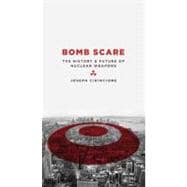
Note: Supplemental materials are not guaranteed with Rental or Used book purchases.
Purchase Benefits
Looking to rent a book? Rent Bomb Scare [ISBN: 9780231135108] for the semester, quarter, and short term or search our site for other textbooks by Cirincione, Joseph. Renting a textbook can save you up to 90% from the cost of buying.
| List of Figures and Tables | p. vii |
| Acknowledgments | p. ix |
| Introduction | p. xi |
| Building the Bomb | p. 1 |
| Controlling the Bomb | p. 14 |
| Racing with the Bomb | p. 21 |
| Why States Want Nuclear Weapons-and Why They Don't | p. 47 |
| Today's Nuclear World | p. 84 |
| The New U.S. Policy | p. 110 |
| The Good News About Proliferation | p. 125 |
| Nuclear Solutions | p. 139 |
| Glossary | p. 159 |
| Notes | p. 169 |
| Index | p. 193 |
| Table of Contents provided by Ingram. All Rights Reserved. |
The New copy of this book will include any supplemental materials advertised. Please check the title of the book to determine if it should include any access cards, study guides, lab manuals, CDs, etc.
The Used, Rental and eBook copies of this book are not guaranteed to include any supplemental materials. Typically, only the book itself is included. This is true even if the title states it includes any access cards, study guides, lab manuals, CDs, etc.